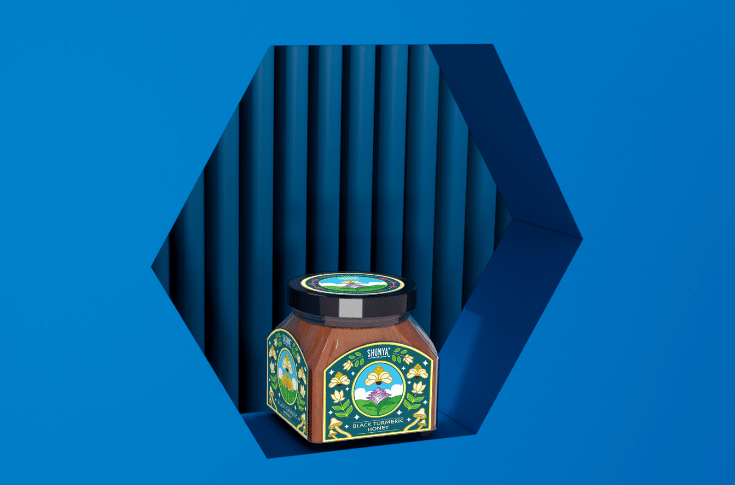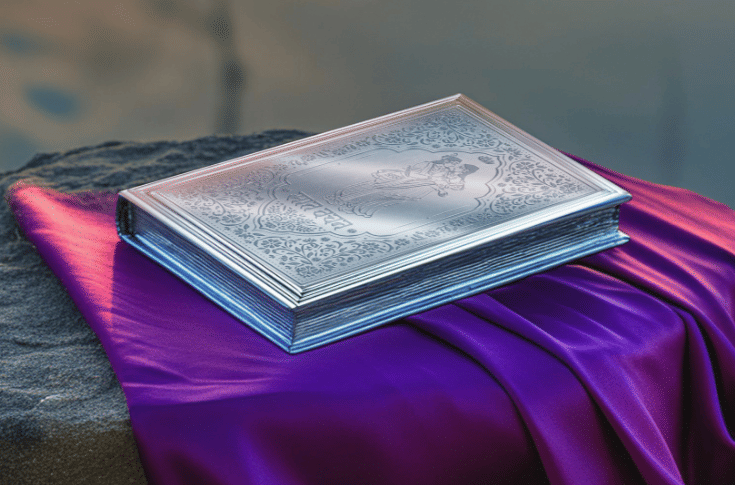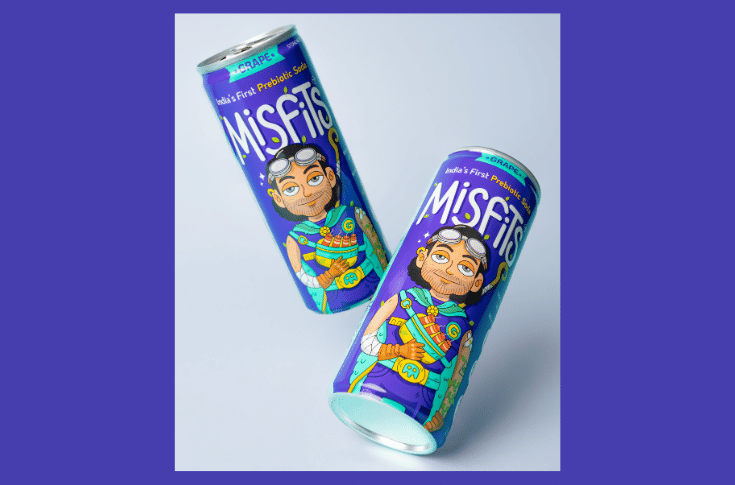Redefining traditions in modern Indian packaging
In conversation with Gajesh Mitkari, founder and creative director, Studio Modak, Jiya Somaiya explores Studio Modak’s contemporary and experimental approach to the world of new-age packaging design.
22 Oct 2025 | By Jiya Somaiya
Studio Modak was born out of two simple beliefs: that design can make everyday life more delightful and meaningful, and that the greatest Indian design philosophies and culture are underestimated.
Founder and creative director, Gajesh Mitkari, recalls, “I founded Studio Modak in Nagpur with the vision of building a studio that balances storytelling, strategy, and craft. Over the years, we have worked on branding, packaging, illustration, and design consultancy across industries.”
Beyond pretty packaging
The packaging sector is a powerhouse in the Indian economy, ranking as the fifth-largest industry and expanding at an annual growth rate between 22% and 25%. Technological advancements, improved infrastructure, and the explosive growth of eCommerce and quick commerce are accelerating this trajectory, creating a surging demand for distinctive and innovative packaging design.
It is here that Studio Modak carves out its niche, distinguishing itself through the artful fusion of cultural heritage, contemporary design, and astute business acumen. For Studio Modak, packaging is storytelling. Mitkari notes, “Our aim is not to just design ‘pretty packaging, we try to build narratives around products that resonate emotionally with people and convey the product and brand story effectively.”

Studio Modak blends cultural heritage and contemporary design fundamentals
Studio Modak’s network spans printers, packaging vendors, and collaborators across India, allowing the studio to build on an idea from scratch, and in Studio Modak’s case, from a sketch, to a finished product in hand. Mitkari observes, “This product will not just be any simple product, but something that people would want to have.”
His approach to packaging design begins with understanding the brand story, the founder’s vision, the promise and USPs of the product, and the consumer context. What follows is creating a design language that makes the product desirable, functional, and memorable, while ensuring it stands out on shelves and quick commerce and eCommerce platforms. Mitkari remarks, “I look at packaging as the first handshake between a product and its consumer, and the first impression of any brand to a consumer.”
Packaging design is fraught with invisible challenges, but Mitkari’s blend of cultural sensibility and practical thinking allows Studio Modak to deliver superior results. His expertise involves meticulous attention to the entire product lifecycle, including the unboxing experience, the logistics of fragile items (like glass), and how the packaging performs in the real world. This means strategically catering to how the product travels, stacks, and survives humidity and rough handling. Crucially, he ensures the design system scales seamlessly across various SKUs and product lines while being mindful of cultural cues, colours, symbols, and visuals that carry different meanings across regions.
Leveraging this powerful combination of sensibility and practical strategy, Studio Modak collaborates with various contemporary brands, pushing the boundaries of traditional packaging. Mitkari points to a key success: “One of my favourite projects has been working with DRB Foods for their festive collections.” Here, Studio Modak delivered packaging that was not just festive but was an elevated cultural vessel, capturing the spirit of gifting, family, and tradition. He notes their goal was to create “Something that would live beyond the product itself.”

Studio Modak captures the spirit of festivity and gifting
In another notable project, the studio successfully unified storytelling, authenticity, and premium aesthetics for Shunya’s Himalayan Black Honey. Their strategic expertise also fueled the creation of the brand Misfits, which has grown to lead India’s alternative soda industry.
Mitkari’s inspiration is designs that merge creativity with sustainability. He remarks, “I have always been fascinated by minimal-material, high-impact innovations, like Japanese origami-inspired folding cartons that eliminate the need for adhesives — not just packaging but Japanese design sensibilities in furniture and visual design are also something that always inspires me.” He continues, “Compostable flexible packaging that does not compromise on print quality also sparks inspiration.”
What’s new
With the shift in consumer preference toward authenticity, sustainability, and simplicity, Mitkari observes, “Consumers today are more conscious and informed. Storytelling is driving this shift; people want to know why the product exists and what it stands for.”
A key trend that Mitkari is noticing is consumers buying celebratory packaging and “Packaging that tells the story of the brand unapologetically,” as he explains.

Studio Modak's design for Misfits, which is leading India’s alternative soda industry
For Studio Modak, sustainability is a non-negotiable for design thinking. Mitkari explains, “We actively work with vendors to explore eco-friendly substrates, minimal-ink printing, biodegradable laminates, and structural packaging that reduces material wastage. We also push our clients away from plastic packaging as much as we can.” He believes that small shifts, like designing packaging that reuses easily or ships flat, can make a huge difference.
Looking ahead
Looking ahead, Studio Modak is expanding into building their own product lines while continuing client work, Mitkari comments, “Things that combine design with wit, craft, and storytelling.” The studio is looking at collaborations with sustainable material innovators while educating the future generation of designers about sustainability and brand impact through good design by taking workshops and events.
Mitkari highlights that interactive packaging should be explored further. He notes, “QR codes, AR filters, or hidden storytelling layers that engage people beyond just buying and using. Interactive packaging talks back and invites curiosity that can build lasting brand love.”
He concludes, “For us, the future is about creating designs that spark joy and responsibility together.”
Your favourite packaging design trend?
Experimental typography and retro design with strong storytelling.
A particular type of product or industry you especially enjoy designing packaging for?
Food and beverage — it connects directly with culture, rituals, and emotions. The possibilities are endless.
Any project or product that you would like to design or redesign?
Alcohol brands — they spend a good amount of money and time on research and development. I would also like to reimagine matchbox covers in a contemporary yet nostalgic way, bringing back the charm of vintage Indian graphics. Film poster design is also something I have really been into since I was a student.
Any books or movies that have sparked inspiration?
Graphic novels like Habibi and Blankets by Craig Thompson! I also like Made in India by Kalim Winata. And films like The Grand Budapest Hotel, for its colour palettes and world-building. I admire Annie Atkins’s work as well.
Any brands that are at the top of the packaging design game currently?
Globally, brands like Moksha and Apple are known for their consistency, detail, and user experience in unboxing. In India, brands like Anand Sweets and Forest Essentials have done a great job of blending design with storytelling.
One product you wish were designed better?
Everyday essentials like tea, salt, or sugar packs, often overlooked, but they touch millions of homes daily.


